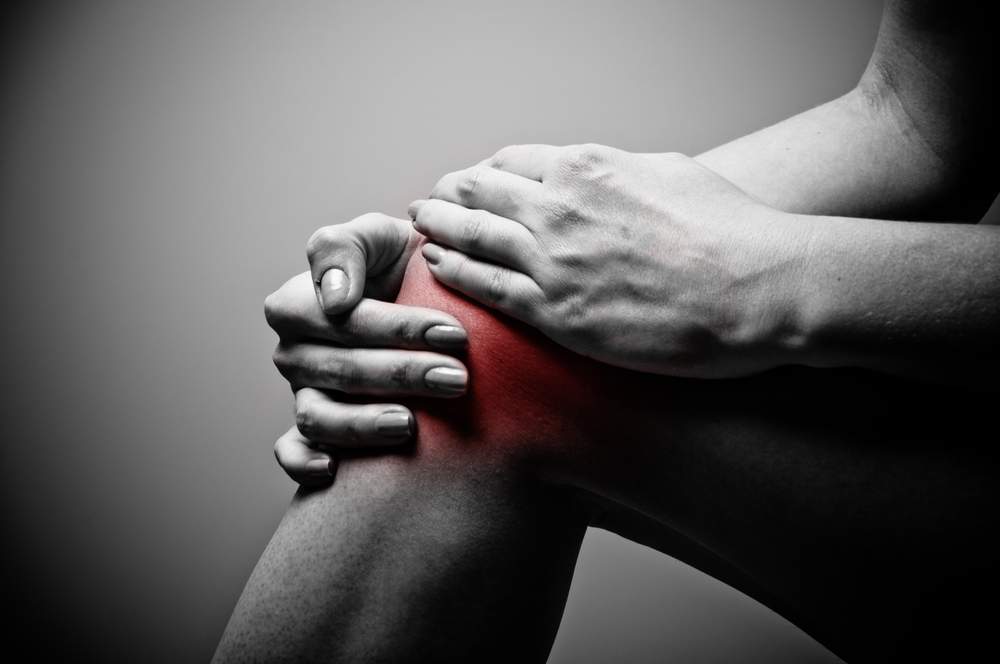“If I could change one thing about myself, I would have better knees. Mine are shot because of injuries. You’re only as good as your legs, whether you’re an athlete or an actor.” ~ William Petersen
For most of us, walking, sitting, squatting or kneeling, are painless movements. In fact, many of us carry out these motions every day without thinking. But that’s not always the case and it’s not always true for those with knee pain.
When one or both knees are experiencing acute or chronic pain, every movement of our legs makes us distinctly aware of our knees. And not in a good way.
The Amazing Mechanics of the Human Knee
As WebMD notes, the knee is one of the largest and most complex joints in the body. It joins the thigh bone (femur) to the shin bone (tibia). Other bones that make the knee joint are the smaller bone that runs alongside the tibia (fibula) and the kneecap (patella).
Where each of these bones come together at the knee joint they are covered with a layer of cartilage that absorbs shock and protects the knee. Simply put, the knee is a joint made up of two long leg bones held together by muscles, ligaments, and tendons.
Tendons and ligaments are different structures with distinct functions.
The tough cords of tissue that connect muscles to bones are the tendons, while ligaments are elastic bands of tissue that connect one bone to another. Some of the knee ligaments give stability and protection to the joint, while other ligaments regulate the forward and backward movements of the tibia.
There are two groups of muscles that the body uses to move the knee. These are the quadriceps which are at the front of the thighs and move to straighten the legs, and the hamstring muscles on the back of the thighs, which bend the lower leg backwards at the knee.
Unfortunately, this complex structure also provides for several potential issues with various soft tissues that can be the cause of knee pain.
Soft Tissue Injury and Inflammation: Aggravating and Crippling Knee Pain
For many people, especially those past the age of 40, osteoarthritis is the most common cause of knee pain.
Osteoarthritis is a type of arthritis that affects the knee and is a degenerative process in which the cartilage in the joint gradually wears away. In addition, rheumatoid arthritis, or RA, can affect the knees by causing the joint to become inflamed and destroying the knee cartilage. Unlike osteoarthritis, rheumatoid arthritis often affects persons at an earlier age.
For people of any age past childhood, there are several other common causes of acute or chronic knee pain.
As a post at the Hopkins Medicine website notes,
“Many knee problems are a result of the aging process and continual wear and stress on the knee joint (such as arthritis). Other knee problems are a result of an injury or a sudden movement that strains the knee. Common knee problems include the following:
- Sprained or strained knee ligaments and/or muscles. A sprained or strained knee ligament or muscle is usually caused by a blow to the knee or a sudden twist of the knee. Symptoms often include pain, swelling, and difficulty in walking.
- Torn cartilage. Trauma to the knee can tear the menisci (pads of connective tissue that act as shock absorbers and also enhance stability). Cartilage tears can often occur with sprains. Treatment may involve wearing a brace during an activity to protect the knee from further injury. Surgery may be needed to repair the tear.
- Tendonitis. Inflammation of the tendons may result from overuse of a tendon during certain activities such as running, jumping, or cycling. Tendonitis of the patellar tendon is called jumper’s knee. This often occurs with sports, such as basketball, where the force of hitting the ground after a jump strains the tendon.”
Common treatment for most knee pain includes rest, ice, and anti-inflammatory OTC medications such as ibuprofen. Additionally, doctors may prescribe wearing a brace to stabilize the knee while it recovers.
However, these various self-care treatments can sometimes fall short of bringing complete healing and restoration of pain-free movement. And that’s when soft-tissue bodywork therapies can make the difference between coping and overcoming.
Treating your Knee Pain Effectively with Pain and Performance Solutions
If you are still suffering from recurring or chronic knee pain, your next step should be to make an appointment with Pain and Performance Solutions.
Whether you’ve been suffering from knee pain for a long time or have just begun to realize that you have pain that is not letting up, give us a call. Knee pain relief begins when we gain an in-depth understanding of when and how your knee pain started.
During your first appointment, we will work with you to learn about your present symptoms as well as any history of discomfort.
At Pain and Performance Solutions we specialize in bringing relief from chronic pain with therapies such as Active Release Techniques® (ART®) and Anatomy in Motion (AiM). And this begins to happen once we understand where your pain started. Often this can mean it started previously with another injury you might have sustained.
A full examination will help us determine which form of treatment is best suited to get you on your road to recovery. Your trust in us is key, as is your honesty. Ultimately, getting your body healthy and working properly is the only way to achieve total recovery.
Don’t simply ignore your knee pain and hope it will just go away. Let us help. Contact us today at 707-636-4404 or book an appointment online to start your recovery process.
